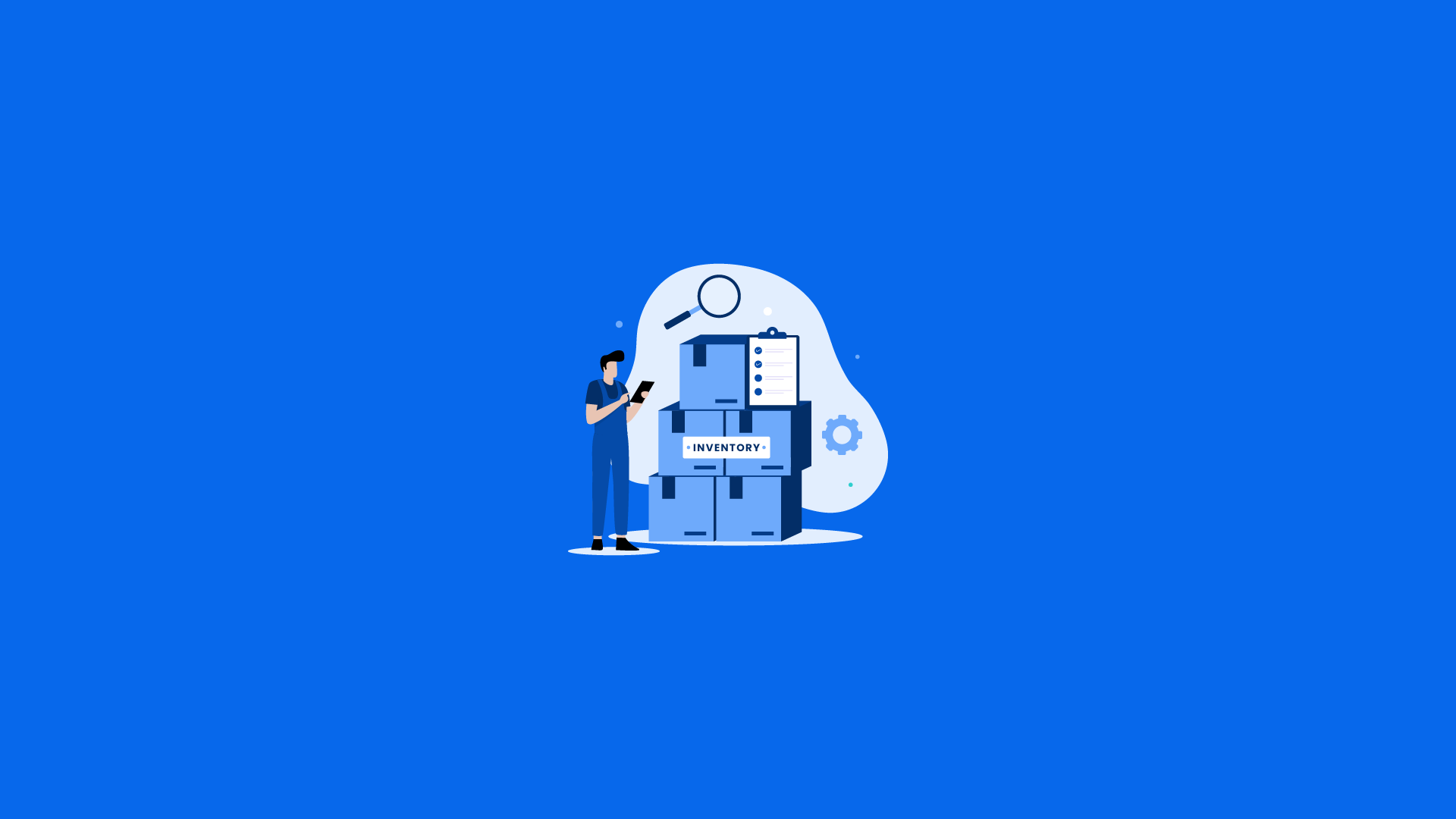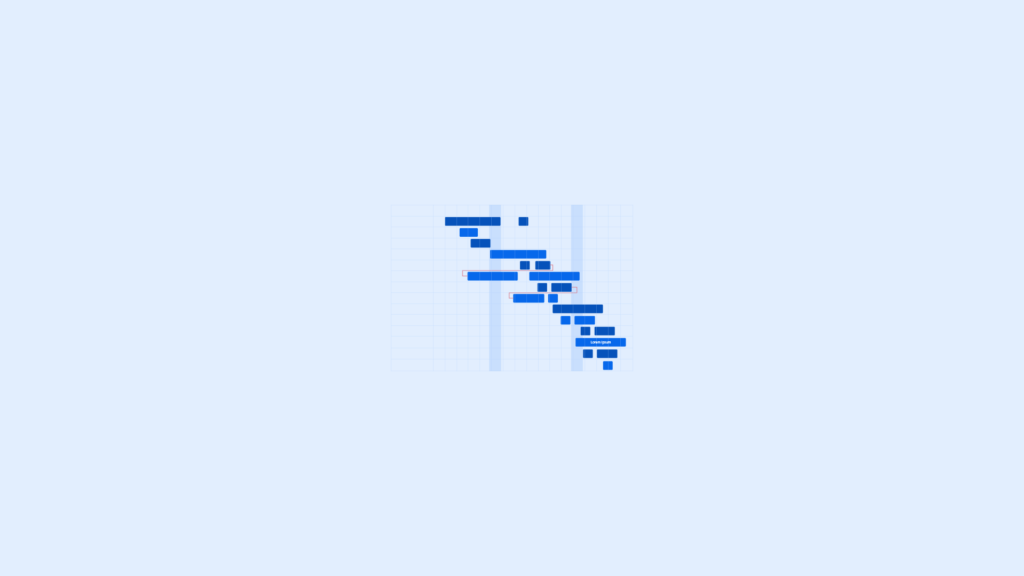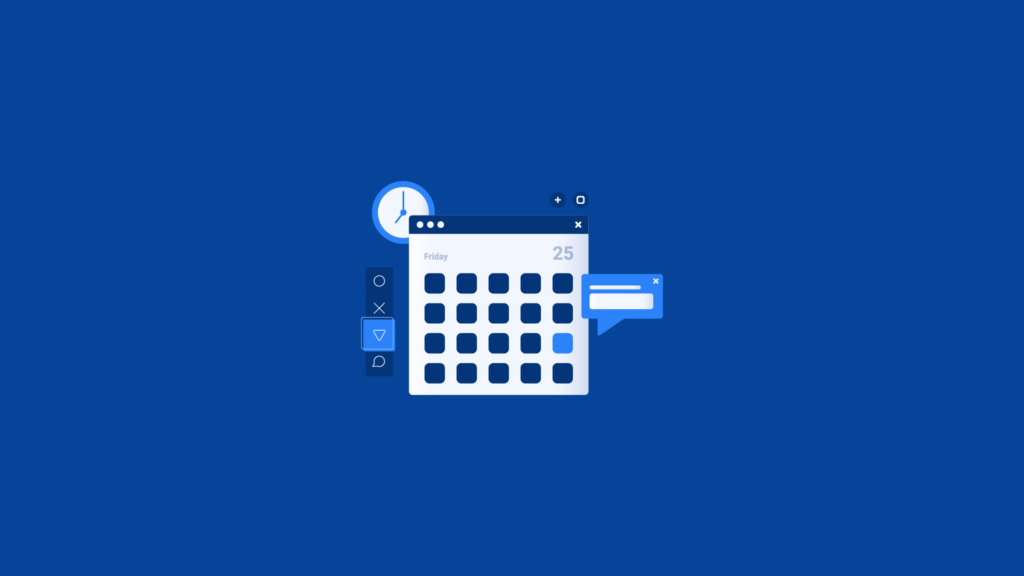The right inventory management software can make or break any company, small or large. With ever-increasing competition from all sides, having a method for tracking, organizing, and assessing data in real time can be the difference between success and failure.
More than 89% of small businesses are experiencing an increase in shoplifting, meaning tracking inventory can be a challenge in tracking inventory and
The best inventory management applications provide powerful customizable tools to cater to the size of a business operation and easily integrate with other software.
They are also secure enough to grant access to key personnel using mobile or computer devices to automate tasks that were previously complex and time-consuming.
To choose the perfect inventory management application, one must consider the industry they operate within as well as their company’s unique needs and requirements.
Many programs offer customizable reports that generate forecasts that enable smart purchasing decisions according to past trends.
In this blog post, we compare the top inventory management systems you can use to better understand the movement of your physical goods.
What is Inventory Management Software?
Inventory management software is a system designed to help you keep track of your products, materials, and goods. It helps you easily monitor stock levels and manage inventory by providing real-time data on the quantity, location, condition, and value of items that are stored or in transit.
This kind of software is often used by larger companies that need to have an accurate overview of their entire supply chain.
Inventory management software is used by businesses around the world to keep track of their product inventories.
This includes everything from managing customer orders to tracking shipments and ensuring that products arrive at customers’ doors safely and on time.
There are many different types of inventory management software solutions on the market today, including both cloud-based and desktop-based applications.
Both offer their own sets of benefits and drawbacks, so it’s important to understand what makes one solution better suited for your needs.
What is The Best Inventory Management Software?
Inventory management software is a system designed to help you keep track of your products, materials, and goods.
It helps you easily monitor stock levels and manage inventory by providing real-time data on the quantity, location, condition, and value of items that are stored or in transit.
This kind of software is often used by larger companies that need to have an accurate overview of their entire supply chain.
Inventory management software is used by businesses around the world to keep track of their product inventories.
This includes everything from managing customer orders to tracking shipments and ensuring that products arrive at customers’ doors safely and on time.
There are many different types of inventory management software solutions on the market today, including both cloud-based and desktop-based applications.
Both offer their own sets of benefits and drawbacks, so it’s important to understand what makes one solution better suited for your needs.
1. Cin7 Core
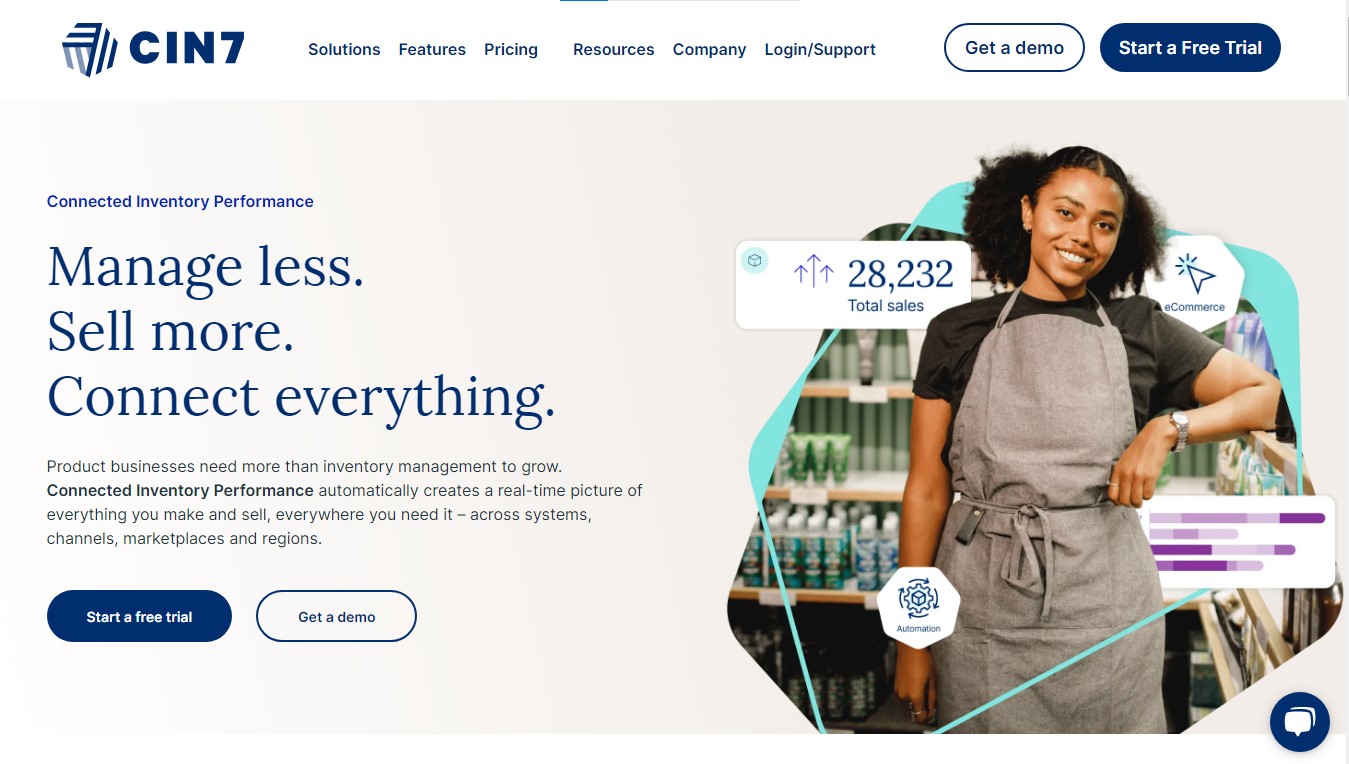
Cin7 is a comprehensive, cloud-based inventory management solution that allows businesses to streamline their supply chains and increase operational efficiency. Cin7 provides real-time visibility into inventory levels, stock movement, purchasing cycles, and fulfillment activities. This helps business owners stay on top of all aspects of the supply chain for improved decision-making.
Cin7’s platform is tailored to meet most business requirements. Its extensive customization capabilities give you the ability to tailor the software as needed for your specific business size and scale.
The software also offers expansive reporting options so businesses can get a more in-depth understanding of their performance in terms of inventory and supply chain operations. With the help of integrated CRM/ERP systems like Xero or Quickbooks, Cin7 simplifies accounting tasks and takes detailed reports from different parts of the company for a unified look at overall performance.
The scalability of this platform also helps businesses grow with ease, providing an efficient PLM system no matter where a company is on its growth journey. Thanks to these features, Cin7 is a reliable choice for comprehensive inventory control within any business organization.
Cin 7 Core Key Features
- Inventory management allows for easy tracking of inventory, access to detailed sales reports, and the ability to track stock movements with precision.
- Point of sale (POS) technology allows for simplified tracking of sales, customer marketing, and the ability to sell from anywhere using familiar hardware like iPads.
- A B2B Portal allows you to expand your customer base and provide them with the convenience of managing their orders through a personalized platform.
- You can integrate commerce by downloading products into Cin7 Core and gain visibility into stock across all online sales channels, such as Amazon and Shopify.
- The native Cin7 Core Accounting module provides basic functionality, but you can enhance its capabilities by integrating Quickbooks Online or Xero.
- Utilize over 70 customizable reports to gain a comprehensive understanding of your sales, purchases, inventory, production, and financial data.
Pros
- Cloud-based inventory management
- Comprehensive and easy to use
- Real-time inventory insights
- This product can be customized to meet the specific needs of businesses.
- A variety of reporting options are available.
- Highly scalable
Cons
- It can be confusing if you are new to implementation
- Pricy
Cin7 Core Pricing
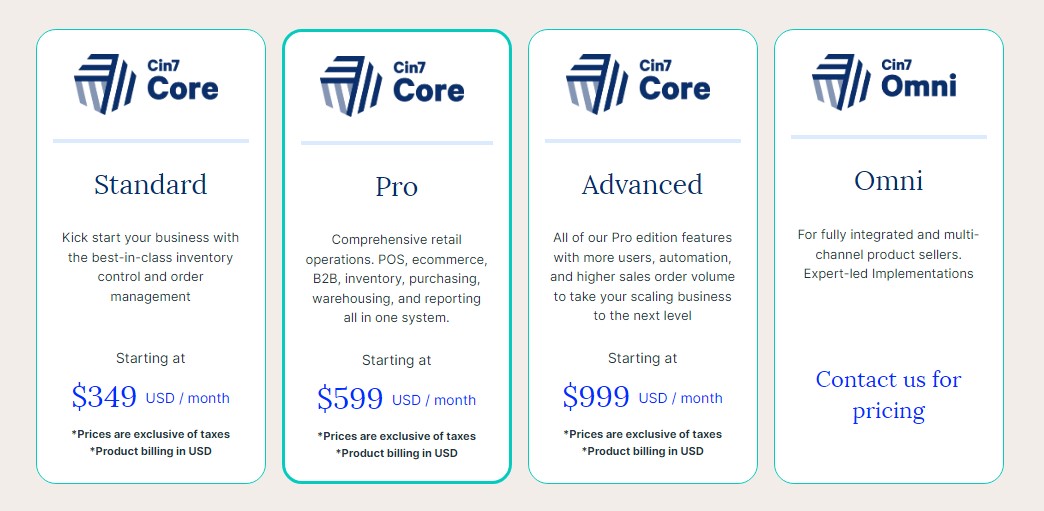
Cin7 Core offers 3 predefined prices, standard at $329/month, Pro, at $599/month, and advanced at $999/month. YOu also have an option for custom pricing for their Omni plan by contacting the CIN7 sales team. To try the platform you can try Cin7 for 14 days and see how well you can manage your inventory with automation on each touchpoint from supplier to customer. You don’t need a credit card to register.
Who Cin7 Core is best for?
Cin7 Core is a comprehensive business management solution that can accommodate businesses of all sizes, offering specialized features for manufacturers and product sellers. It is suitable for various types of small businesses and is designed to scale as your business grows.

Cin 7 Core
Comes with a 14 Day Free Trial, No credit card needed.
2. inFlow
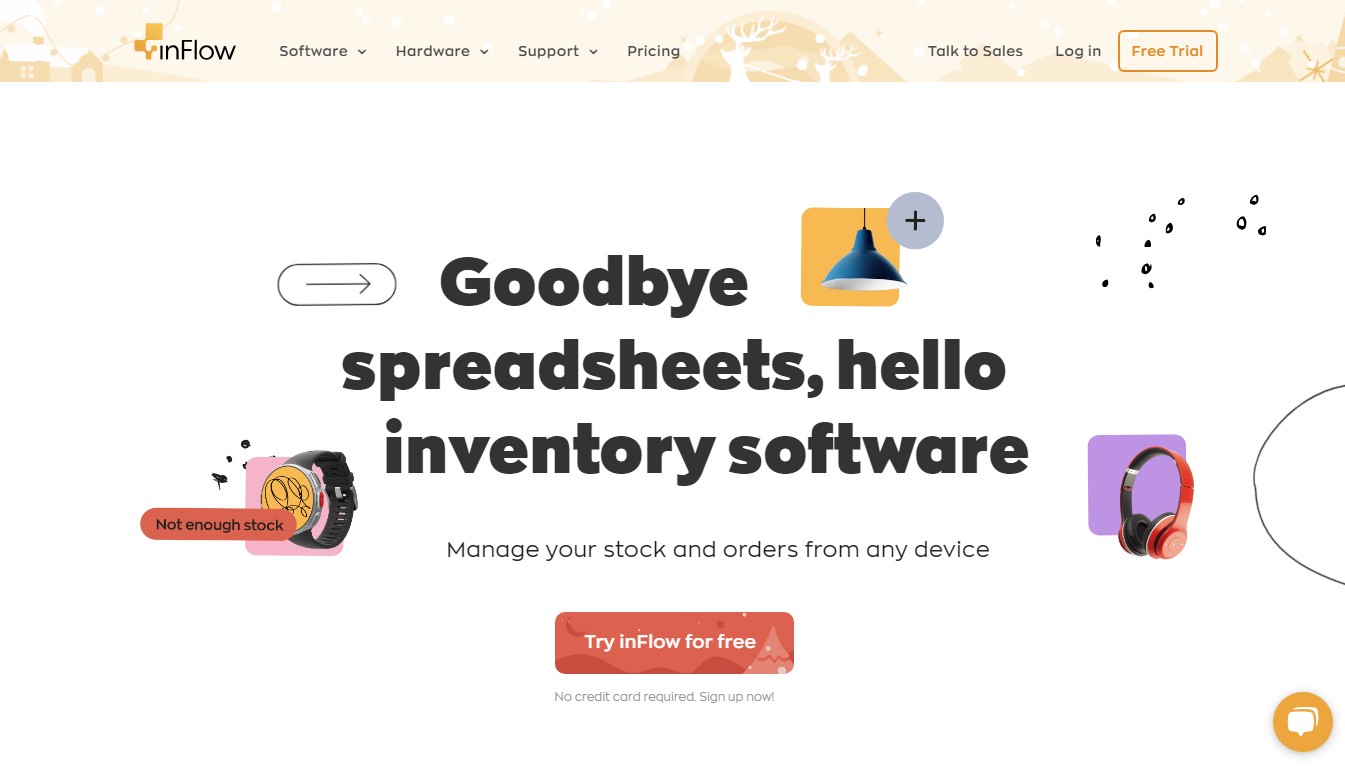
inFlow Inventory is a comprehensive inventory management system that helps businesses gain control of their stock levels and shipments. It features all the essential tools and resources needed to easily manage whole departments, so any business can benefit from using it.
What sets inFlow apart from other systems is its ability to integrate smart scanner devices into the overall management process. This ensures that stock levels remain accurate without having further interaction with store personnel or customers themselves.
It also comes with features such as barcode label generation so packages and items can be quickly sorted during pick-up or delivery. With all these valuable functions rolled up into one package, businesses of all sizes can streamline their operations while improving efficiency at the same time.
InFlow Key Features
- Asset Management.
- Inventory Management.
- Catalog Management.
- Inventory control.
- Invoicing.
- Purchase Order.
- Work order management.
- Order Tracking.
Pros
- The company provides an in-house smart scanner device.
- Create barcode labels.
- There are over 30 reports available.
- An integrated online showroom for listing business-to-business items.
Cons
- Must opt for a more expensive plan to access unlimited locations.
- Several included integrations are limited for all plans; must pay an additional monthly charge to add integrations.
inFlow Inventory Management Pricing
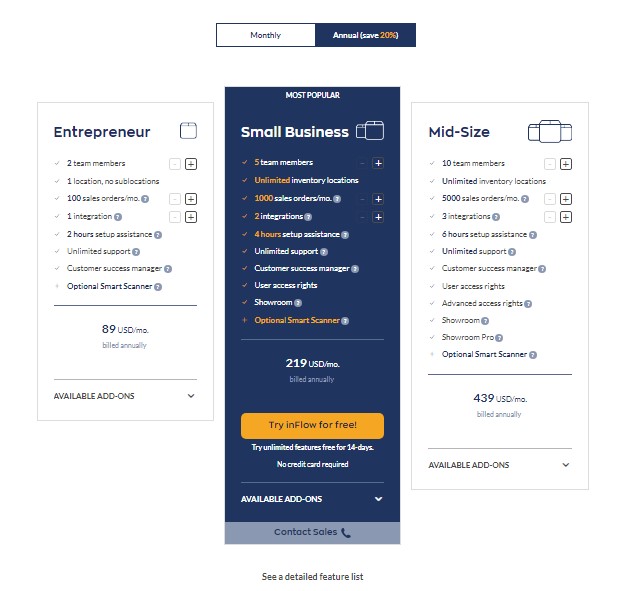
The pricing plans are fairly competitive with $110/month for its basic tier, and additional tiers ranging from $279 to $1,319 per month. For those just starting or curious to try out the service, inFlow offers a no-risk 14-day free trial to get started without spending any money right away.
Who inFlow Inventory Management is best for?
inFlow Inventory Management
Comes with a 14 Day Free Trial, No credit card needed.
3. Lightspeed Retail
Lightspeed Retail offers great POS (Point Of Sale) features and inventory management tools. Lightspeed Retail works well together with other applications such as Sku Vault. Lightspeed Retail allows you to do bulk changes, discounts, or promotions.
Lightspeed Retail is an ideal choice for small retail stores. This combination of point of sale (POS) and inventory management programs stands out from other systems thanks to its stock tracking tools, helpful integrations, and excellent e-commerce capabilities. The best part? There is a 14-day free trial that doesn’t require a credit card.
It works well with other programs such as Quickbooks Online, Magento, Shopify, etc.
The system integrates with a variety of applications across 29 different categories to provide store owners with customizability and convenience. However, the Basic plan doesn’t include any e-commerce functions, so anyone looking for this feature should upgrade their subscription to take full advantage of all Lightspeed Retail has to offer. Additionally, it can only be used on Apple devices and not Android ones.
Lightspeed Retail Key Features
- Asset Management.
- Inventory Management.
- Catalog Management.
- Inventory control.
- Invoicing.
- Purchase Order.
- Work order management.
- Order Tracking.
Pros
- 14-day free trial, no credit card needed
- Integrates with applications in 29 categories
Cons
- The basic plan doesn’t include e-commerce functions
- Doesn’t work on Android devices
- May contain unnecessary features for small shops
Lightspeed Retail Pricing
Lightspeed Retail plans include Lightspeed Payments, which has a fee of 2.6% plus $0.10 for card-present transactions and 2.6% plus $0.30 for card-not-present transactions. Each plan includes one register, and additional registers can be added for $29 per month. The plans are based on annual payments, but monthly plans are also available at a higher monthly cost of $10 to $40 compared to the annual plan. The components of Lightspeed Retail plans are as follows:
- The cost for basic POS and retail operations is $69 per month.
- The cost to add accounting and e-commerce functions is $119 per month.
- The cost of adding Lightspeed’s loyalty program and analytics is $199 per month for the advanced plan.
- The Enterprise plan offers all the services included in the Advanced plan, along with additional features such as personalized consultation and preferred Lightspeed Payment rates. The price for this plan is available upon request.
Lightspeed Retail
Comes with a 14 Day Free Trial, No credit card needed.
4. Fishbowl
Fishbowl is a powerful inventory management software that helps businesses of all sizes streamline their processes. It has been specifically designed to integrate seamlessly with Quickbooks, allowing you to manage your inventory more easily and quickly.
By automating the process, businesses can keep track of stock levels without having to manually input data, and it also enables users to create and share work orders between teams for a variety of tasks.
Fishbowl makes setting up simple and intuitive. There are plenty of helpful resources available ranging from starter videos on the website, online tutorials to help you get going, as well as in-house experts who are always available to lend a hand if needed.
It’s perfect for enterprises that want to scale their operations smoothly whilst granting everybody involved access to all relevant information they need when they need it most. Fishbowl makes it possible thanks to its modern approach in store management which is reliable and efficient.
Fishbowl Key Features
- Asset Management.
- Inventory Management.
- Catalog Management.
- Inventory control.
- Invoicing.
- Purchase Order.
- Work order management.
- Order Tracking.
Pros
- 14-day free trial, no credit card needed
- Integrates with applications in 29 categories
Cons
- The basic plan doesn’t include e-commerce functions
- Doesn’t work on Android devices
- May contain unnecessary features for small shops
Fishbowl Pricing
Lightspeed Retail plans include Lightspeed Payments, which has a fee of 2.6% plus $0.10 for card-present transactions and 2.6% plus $0.30 for card-not-present transactions. Each plan includes one register, and additional registers can be added for $29 per month. The plans are based on annual payments, but monthly plans are also available at a higher monthly cost of $10 to $40 compared to the annual plan. The components of Lightspeed Retail plans are as follows:
- The cost for basic POS and retail operations is $69 per month.
- The cost to add accounting and e-commerce functions is $119 per month.
- The cost of adding Lightspeed’s loyalty program and analytics is $199 per month for the advanced plan.
- The Enterprise plan offers all the services included in the Advanced plan, along with additional features such as personalized consultation and preferred Lightspeed Payment rates. The price for this plan is available upon request.
Lightspeed Retail
Comes with a 14 Day Free Trial, No credit card needed.
What Changes Does Inventory Management Bring?
Inventory management software is changing the way retail stores do business. Retailers use these tools to keep track of everything from product availability to customer preferences.
They also offer features such as real-time reporting and predictive analysis. These tools help retailers save money and improve efficiency.
Smart order management systems will help you reduce costs and increase productivity, while cloud technology allows you to run your business efficiently across multiple platforms.
Data analytics helps businesses understand their customers and what products or services they want. In addition, inventory management software tracks inventory levels and manages stock.
What Is Inventory Management?
Inventory management is the process of tracking everything that comes into and leaves your store. You need to know where your products come from and where they go.
If you don’t know where your items come from, you won’t know if something went missing. And if you don’t know where they’re going, you won’t know where to look for a replacement.
You’ll want to keep track of every single unit of inventory that enters and exits your store. For example, let’s say you sell 10 pairs of shoes. You might start with one pair in stock and nine pairs on hand.
When someone buys one pair, you record that purchase. Then, you take one pair off hand and put one pair in stock. So now you’ve got 9 pairs of shoes in stock and 9 pairs on hand.
If you sell another pair of shoes, you take one pair of shoes off hand and put one more pair in stock. Now you’ve got 8 pairs of shoes in stock.
This process continues until you reach zero. At that point, you know exactly how many pairs of shoes you had on hand and how many you sold.
When Do You Need to Use Inventory Software?
Inventory management software helps retailers track multiple products across several channels. This allows you to manage each product individually. For example, you could sell a certain item online, in stores, and via phone.
With an inventory management system, you can easily see where it’s coming from, what it looks like, and how much stock you have left.
Cloud-based tools give you total control over your orders, shipping, and fulfillment process. They offer free services that can help you automate repetitive tasks and reduce errors. These features make it easy for you to keep up with changes in the market and adapt quickly.
Free inventory management systems such as Magento Enterprise Edition allow you to integrate with third-party applications. This lets you connect to external data sources, add custom fields, and set up automated workflows.
In addition, you can use integrations to sync inventory levels with accounting packages and customer relationship management (CRM) platforms.
How Much Does Inventory Software Cost?
Inventory management software helps retailers track multiple products across several channels. This allows you to manage each product individually.
For example, you could sell a certain item online, in stores, and via phone. With an inventory management system, you can easily see where it’s coming from, what it looks like, and how much stock you have left.
Cloud-based tools give you total control over your orders, shipping, and fulfillment process.
They offer free services that can help you automate repetitive tasks and reduce errors. These features make it easy for you to keep up with changes in the market and adapt quickly.
Free inventory management systems such as Magento Enterprise Edition allow you to integrate with third-party applications.
This lets you connect to external data sources, add custom fields, and set up automated workflows. In addition, you can use integrations to sync inventory levels with accounting packages and customer relationship management (CRM) platforms.
How Much Does Inventory Software Cost?
Cloud-based inventory management software costs less than traditional stand-alone inventory systems. However, most vendors charge an initial setup cost and recurring monthly subscription fees. And some offer discounts on multiyear contracts.
The cost of Inventory Management functionality varies depending on the system’s level of robustness, integration opportunities, and can range from $150 to over $1 million per year.
Inventory software typically includes features like barcode scanning, item tracking, purchase ordering, scheduling, reporting, and supplier relationship management. Some vendors offer free trials, while others do not.
When choosing a software provider, consider how much money you want to spend. A small business owner may choose to start with a free trial version, while someone running a large enterprise may require a paid solution.
The cost of inventory management software varies depending on the size of your business. Small businesses often use basic solutions, whereas larger organizations tend to go with enterprise-level products.
What Are the Benefits of Inventory Management Software?
Inventory management software saves money by preventing waste and improving efficiency.
It helps customers find what they want faster and easier while ensuring you always have enough inventory available. Inventory management software ensures you never run out of stock.
The benefits of inventory management software include:
- Reducing costs – By streamlining your ordering processes, inventory management software reduces wasted materials and increases efficiency.
- Improving customer experience – Customers appreciate having access to everything they need, whenever they need it. With inventory management software, you provide a seamless shopping experience.
- Ensuring availability – When you use inventory management software, you know exactly how much inventory you have on hand and where it is located. You can easily track inventory levels and ensure that you always have enough supply.
Automates inventory tasks
Inventory management is one of those things that seems like it shouldn’t take long to do, but once you start getting into it, it takes forever.
You spend hours making sure everything is accounted for, and even though you think you did it correctly, there’s always something else that slips through the cracks.
An inventory control system makes managing your inventory much easier. Instead of manually entering every item into a spreadsheet, you use an app that automatically scans barcodes and enters data about each product.
This saves you tons of time because you don’t have to enter anything manually.
What’s the Best way to Keep Track of Inventory?
Inventory management software can help you manage inventory, track sales, and automate processes.
You don’t want to lose money because of missing items, overstocking, or damaged goods. But how do you know whether you have enough inventory?
What happens when you run low on something? How do you make sure everything gets shipped on time? These questions are common among small businesses, but they can also apply to big companies.
If you operate a retail store, food truck, or restaurant, you probably already use some type of inventory management system.
There are several types of inventory management software solutions available today. Some focus on tracking inventory while others automate certain tasks such as ordering supplies or shipping products.
In addition, some systems offer features like barcode scanning, scheduling, reporting, and mobile apps.
Conclusion
Inventory Management Software – Inventory control is one of the most important aspects of running a successful retail store or eCommerce business.
It is arguably the most important aspect because, without proper inventory control, you could end up losing money.
Frequently Asked Questions (FAQs)
How to choose the best inventory management system?
Inventory management software is used to manage the flow of goods throughout a supply chain. This includes tracking products from production to distribution centers, warehouses, stores, and ultimately consumers. Inventory management software helps companies determine where items are located and how much stock each location holds. Companies use it to track sales performance, forecast demand, and plan future purchases.
What are the types of Inventory management software?
The three main types of inventory management software are enterprise resource planning (ERP), warehouse management system (WMS), and computerized manufacturing execution system (CMES). ERP software handles the financial aspects of running a business, while WMS software focuses on managing physical assets like inventory. CMES software integrates both ERP and WMS.
What Is Inventory Control?
Before we dive into the different types of inventory management solutions, let us define what exactly inventory control is. Essentially, inventory control is the process of managing the flow of products from the point of production to the point of sale.
You might think of it like a conveyor belt. If there are too many items on the conveyor belt, it will slow down. Likewise, if there are too few items on the conveyor, the whole thing stops working altogether.
